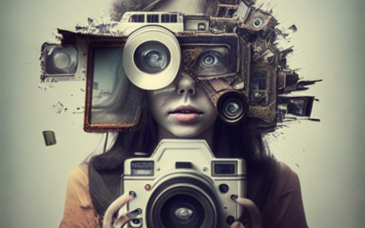Flat lay photography is a popular style of photography that involves capturing images from a bird's-eye view. This genre has become especially popular with the rise of social media platforms like Instagram, where aesthetics and harmonious compositions play a key role. Both professional photographers and hobbyists use flat lay photography to create visually appealing images of products, food, clothing, and everyday items.
Basics of Flat Lay Photography
Creating a successful flat lay image begins with selecting and arranging objects on a flat surface. The preparation process starts with choosing a theme and an appropriate background that either highlights the main subject or adds interest to the composition. Popular backgrounds include wooden tabletops, marble surfaces, or textile fabrics. These materials help create a textured and deep background, adding a unique touch to the shot.
Lighting Matters
Lighting is a crucial aspect of any photography style, and flat lay is no exception. Natural light from a window is often considered the best option, as it creates soft shadows and gives the image a natural look. When using artificial lighting, it's important to avoid overly harsh shadows and reflections that could ruin the overall composition. Diffused light sources, such as soft lamps or lightboxes, help create even lighting.
Composition and Object Placement
A key element of a successful flat lay photograph is thoughtful composition. The rule of thirds is commonly used, which helps visually divide the frame into equal parts, making it easier to place objects. It's advisable to avoid overcrowding the frame; instead, leave enough negative space to let the viewer focus on the main subjects. Symmetry and balance are essential elements of composition that give the shot a harmonious feel.
Color and Texture
The color palette plays a significant role in creating the atmosphere of a flat lay photograph. Monochromatic compositions look sleek and minimalist, while contrasting color combinations attract attention and add dynamics. Choosing colors that complement each other and match the theme is essential. Texture is another important element that adds depth to the image. For example, a rough fabric surface can contrast with the smoothness of a glass object, creating an interesting visual interplay.
Practical Tips for Beginners
- Plan Your Composition Ahead. Before you start shooting, think about how the objects will be arranged, what background to use, and what lighting will work best.
- Use a Tripod. To avoid camera shake and ensure sharp images, use a tripod, especially when shooting in low light.
- Edit Your Photos. Don't forget to post-process your images. Editing apps like Adobe Lightroom can help adjust light, shadows, and colors to make your shots more appealing.
Conclusion
Flat lay photography is a fascinating and creative activity that allows you to express your individuality and create beautiful visual stories. Whether you are shooting for a personal blog or a professional portfolio, following the basic principles of composition and lighting will help you create impressive and harmonious images.


